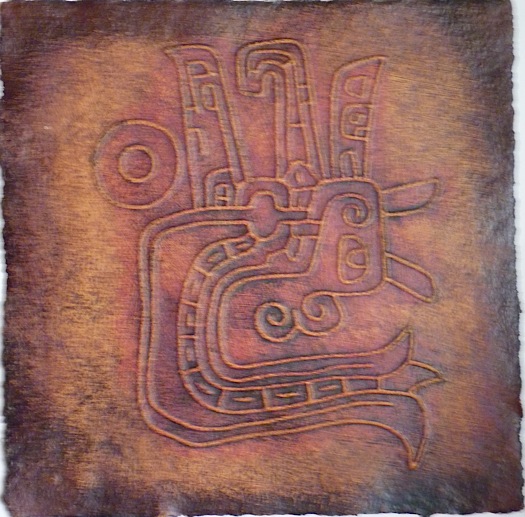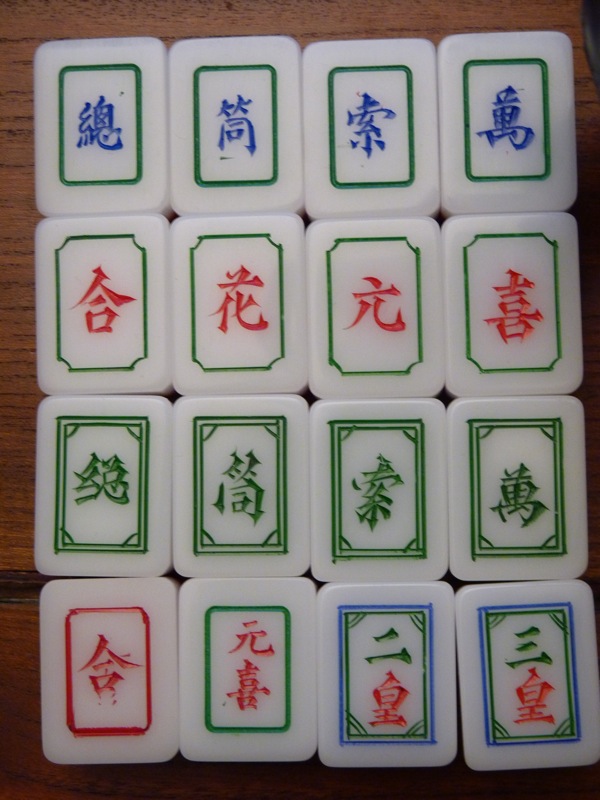One of the most important lessons I learnt lately was from Ben Rosenbaum, at the last VD workshop I attended: he said (very rightly) that the bits and pieces of a character that aren’t in service to the story are those which make them come to life.
So, for instance, if I have a character who likes soy sauce and prawn crackers (and none of that is relevant to the story except in an incidental capacity), she’s going to feel much more real to you than “random girl who gets dropped into magical country and must fight to survive”. Because that last is a plot description, and nothing else: it’s a shell that’s waiting to be filled, but it can never, ever be a good character description.
It’s not a new lesson–on some level, I’ve always known that, but it’s something I struggled to put into practice in my first short stories. When I was starting out, I wrote too much wordage, and I had to teach myself to cut–and that included cutting out the bits that I thought didn’t advance the story, like the “extraneous background”. The problem is that my characters ended up being–not cardboard cutouts, but people who didn’t feel real. People who’d sprung up, all armoured and armed, to answer the need of Story. I could swap them, and it wouldn’t change anything. Acatl in the first Obsidian and Blood stories (here and here) is a nice enough guy, but he doesn’t really exist. He inhabits a detailed world, but he’s as thin as paper, containing just enough to move the plot forward, give him handy crises of conscience when needed, and that’s about all. It’s not like those stories are failures–they’re mainly plot-driven, so it’s not so vitally important for the main character to feel real–but they lack something. They’re thin, for want of a better word.
The good news is, I’ve got better at this for short stories; but from the start I was infinitely better at the whole backstory thing with novels. I might not have articulated the lesson well at this stage, but I approached things in a very different matter when I started planning my first decent novel: I wrote characters sheets, and they all had a “quirks” section–it’s Acatl’s love of food; Ceyaxochitl’s acerbic character, and her tendency to bang her cane on the floor to punctuate her words. It’s also their views on various things that I didn’t really need for the novel itself: when I started writing Servant, I knew exactly what Acatl feels about women, even though this was never actually required to come up in the first novel–but this helped me, even at a subconscious level, to sort out his character, and to round him into someone who would feel real to the reader. I also knew pretty much everything about Acatl’s life from his birth onwards, and most of that never made it into the novel either; but it helped me handle how he felt about his brother or Ceyaxochitl.
There are other bits that are, strictly speaking, extraneous from a novel, if we view it only from a plot standpoint: secondary/minor characters [1][2]. They’re not required by the plot, per se–well, OK, they are, but the plot doesn’t require much to them beyond, say, “be an obstacle to main character’s attempt to free his brother”. So, accordingly, those characters weren’t overly planned in my synopsis: a brief mention was more than enough, or so I thought.
I hadn’t expected most of them to hijack the narration, or to be so much fun. I think what happened was a variant of the “non-essential” thing: because I didn’t feel bound to respect any kind of character sheet or plot summary with them, I basically improvised as I was writing, and created them out of whole cloth in the space of a few scenes. Mihmatini, Acatl’s sister, was basically a name on a piece of paper; I hadn’t actually expected her to berate Acatl quite so soundly, or to be so mercilessly pragmatic. Likewise, Nezahual-tzin was just a required role, as the Revered Speaker of an allied power; I hadn’t thought that so many sparks would fly between him and Teomitl; or that he would have such an enigmatic and exasperating streak.
Three books in, and I’m proud of my unexpected characters. I gave them story arcs (both Mihmatini and Nezahual-tzin have pivotal roles in Master of the House of Darts); developed their personalities and had them interact with each other (one of my favourite scenes in MoHD is one which has Mihmatini meet the over-arrogant priest of Tlaloc, Acamapichtli, and they have what is best described as a courteous spat); and, of course, because it’s book 3 in a trilogy, I put them through the wringer, and tested their loyalties until they broke. Because, you know, it’s what authors do.
And my favourite character? It’s a bit like choosing favourites among one’s children–always a fraught business… I’m going to go for “which character surprised me most”–and the answer to that is actually Acamapichtli, the High Priest of the Storm Lord. In book 1, he was basically the “need an obstacle” character, and I gave him everything that went with the role: staggering arrogance and cutting wit (it wasn’t an entirely conscious decision, but of course both of these are flaws that Acatl would hate to bits). By the time book 2 came around, I wondered if I should kill him off and replace him with another High Priest; but I had the feeling this would be too easy, and way too nice for Acatl (and we’ve already established I don’t do nice for characters, right?)
So Acamapichtli stayed in the end–and the guy who started out as a foil for Acatl gradually evolved into someone else–a character who has his own problems, his own decisions to make; and his own sense of ethics and morals (totally contrary to Acatl, but diversity’s good for you, right? 🙂 ). And his own twisted sense of honesty, too. Basically, he’s awesome fun to write, and that’s why I like him.
In book 3… let’s just say Acamapichtli is back for more fun; and that putting him in charge of the entire palace during an epidemic is just a handy way to create more problems for poor Acatl…
What about you? Have you ever had secondary characters appear out of nowhere? Or, if you’re a reader, have you ever seen secondary characters who were as, or more memorable, than the main characters?
[1]I’m not sure where to draw the line between those. I’ve always been very uncomfortable with the “protagonists/everyone else” distinction, and I tend to think in terms of “main characters/secondaries/unnamed”. The main characters are those who drive the narration for me: for instance, by standard terms, Acatl would be the protagonist of Servant of the Underworld; but I consider him on the same level as his brother, Neutemoc, whose desires and wishes drive a lot of the plot even though Neutemoc isn’t either a viewpoint character or a protagonist. Secondary characters are named, and have a specific and distinctive personality (Mihmatini, Tizoc-tzin); but they’re not as important to the plot; and you could pull them from the narration and replace them by someone else with a few minor adaptations. Minor characters are just walk-on parts, and are generally (but not always) unnamed.
[2]If you’re curious, I had characters sheets for the following in Servant: Acatl, Ceyaxochitl, Eleuia, Huei, Mahuizoh, Neutemoc, Quiyahuayo, Teomitl, and Zollin. All the others I considered “secondary” (yes, even Mihmatini! Though she now has her own sheet, of course).


